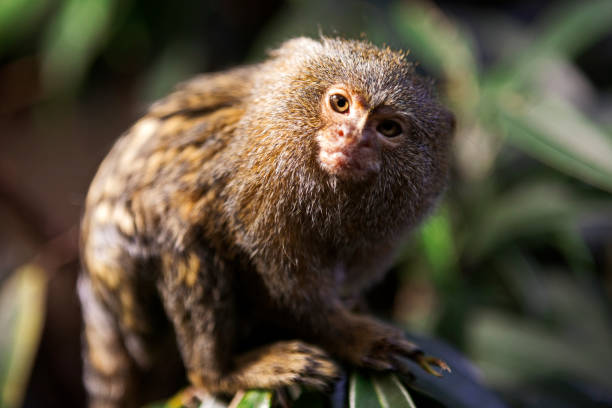Unearthing the Secrets of the Pygmy Marmoset: The World's Smallest Monkey
Dive into the world of pygmy marmosets, the smallest monkeys on planet Earth. These tiny primates are a marvel of evolution, with a fascinating lifestyle and unique set of adaptations that help them survive in the forests of South America. Get ready for a captivating journey into the lives of these miniature monkeys.

The Tale of the Tiny Primates
The pygmy marmoset, scientifically known as Cebuella pygmaea, is native to the rainforests of South America, particularly the Amazon Basin. These tiny monkeys are the smallest primates in the world, measuring just 4.6 to 6.2 inches in length, excluding the tail. They have a unique position in the primate family tree. Although they belong to the New World monkeys’ group, they are different enough to merit their own genus, Cebuella.
Adapting to Life in the Trees
Pygmy marmosets are arboreal, meaning they spend most of their lives in trees. They have evolved several adaptations to suit this lifestyle. Their small size helps them navigate the dense foliage, while their long tails, often longer than their bodies, aid in balancing. Their sharp claws allow them to cling to tree trunks and branches, a unique feature among New World monkeys.
A Gummy Diet
Pygmy marmosets are gumivores, feeding primarily on tree gum. They use their sharp lower incisors to gnaw holes in tree bark, causing sap to ooze out, which they lick up. This behavior, known as gummivory, is rare among primates but represents a successful dietary adaptation to the pygmy marmoset’s specific habitat.
Social and Breeding Habits
Pygmy marmosets live in small family groups of two to nine individuals, usually consisting of a breeding pair and their offspring. They are cooperative breeders, meaning that all group members participate in caring for the young. This social structure, along with their monogamous mating system, sets them apart from many other primate species.
Conservation Status and Threats
Despite their adaptability, pygmy marmosets face several threats. Their habitat is being rapidly destroyed due to deforestation. Additionally, they are often captured for the illegal pet trade, attracted by their small size and endearing appearance. They are currently listed as “Least Concern” on the IUCN Red List, but continued habitat loss and illegal trading could pose a significant threat to their populations in the future.
Market Impact of Pygmy Marmosets
The illegal pet trade involving pygmy marmosets is unfortunately profitable, with these tiny monkeys often sold for several thousands of dollars. This illegal activity not only threatens the species but also undermines conservation efforts. It has led to the creation of several rescue and rehabilitation centers, contributing to the local economy, albeit indirectly.
In conclusion, the pygmy marmoset is a fascinating example of nature’s creativity and adaptability. Despite their small size, these tiny primates have carved out a niche for themselves in the rainforests of South America, demonstrating a unique set of adaptations and a complex social structure. However, they face significant threats from habitat destruction and illegal pet trade, emphasizing the need for effective conservation strategies.





